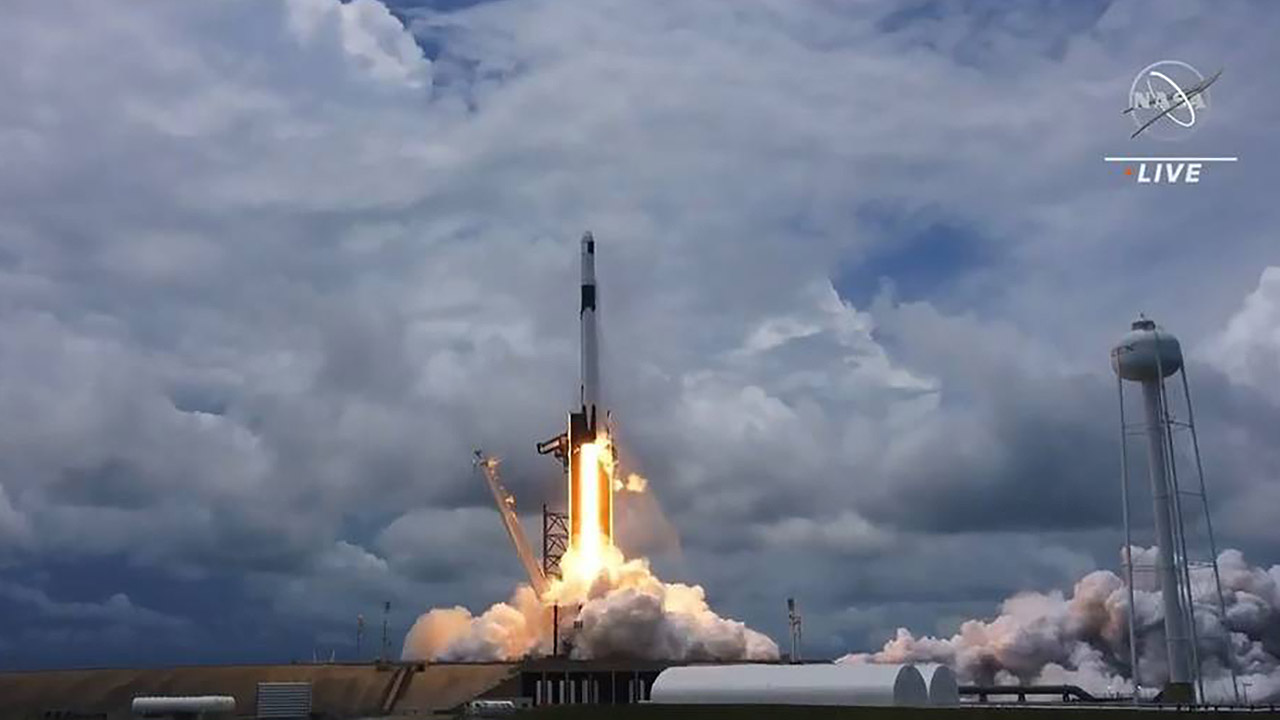KENNEDY SPACE CENTER (FL), August 24, 2021 – In the early morning of Saturday, August 28, SpaceX intends to launch its 23rd Commercial Resupply Services (CRS) mission to the International Space Station (ISS). The mission, launching from NASA’s Kennedy Space Center no earlier than 3:37 a.m. EDT, will send more than 4,800 pounds of critical supplies and research to the orbiting laboratory. Among the cargo flying on SpaceX’s Dragon spacecraft are more than a dozen payloads sponsored by the ISS U.S. National Laboratory, including physical and life sciences investigations, technology demonstrations, and student-led experiments.
Research sponsored by the ISS National Lab intends to bring value to our nation and drive a robust market in low Earth orbit. Below highlights some of the investigations supported by the ISS National Lab on this mission.
The Faraday Research Facility, developed and operated by ISS National Lab Commercial Service Provider ProXopS, is a multipurpose facility that can be utilized for research and technology development investigations from a wide variety of researchers, educators, and students. Through this launch, the facility will support an array of investigations to demonstrate its capabilities. One of these investigations is a project from a team of researchers at Houston Methodist Research Institute. This research team has a long and exciting history of space-based research in areas ranging from nanofluidics to drug delivery technology development, rodent research, and advanced materials. These research projects have led the team to its latest investigation that will aid in the development of a tunable drug delivery implant. The implant can be remotely controlled to release specific amounts of a drug, providing individualized treatment for patients on Earth.
The MISSE Flight Facility, owned and operated by Aegis Aerospace (a recently established merger of Alpha Space Test & Research Alliance, LLC and MEI Technologies, Inc.), will support multiple investigations from both NASA and the ISS National Lab on this mission. Deployed externally on the ISS, the MISSE Flight Facility allows researchers to test materials and components in the extreme environment of space. One ISS National lab-sponsored investigation on this mission will use the MISSE Flight Facility to validate the calibration of an ultra-compact spectral imager for hyperspectral imaging of Earth, with applications in atmospheric sciences, precision agriculture, and medicine. Another ISS National Lab-sponsored project will examine the durability of a new class of 3D-printed polydicyclopentadiene (pDCPD)-based thermosetting polymers, which may provide a more durable option than the current thermoplastics used in aerospace applications.
Several student-led experiments will also be launching as part of this mission, including three investigations resulting from the Making Space for Girls Challenge. The challenge was funded by SpaceKids Global in partnership with the Girl Scouts of Citrus Council and with support from ProXopS. These three student experiments will use the Faraday Research Facility to evaluate the characteristics of living organisms in orbit. One experiment will examine microgravity’s effects on brine shrimp (popularized as sea monkeys), another will look at ant behavior in the absence of gravity, and the third will study plant growth in space. Additionally, the Student Spaceflight Experiments Program is supporting six student investigations, including four on germination techniques, one looking at aluminum corrosion in space, and the last evaluating how tardigrades (microscopic animals also known as water bears) adapt to spaceflight.
These are just a few of the many investigations sponsored by the ISS National Lab launching on SpaceX CRS-23. In the coming days, additional press releases will provide a closer look at some of the investigations on this mission and how the research teams are leveraging the ISS National Lab for research that benefits life on Earth. To learn more about how the ISS National Lab is supporting research on SpaceX CRS-23, please visit our launch page.
Media Contact:
Patrick O’Neill
904-806-0035
[email protected]
# # #
About the International Space Station (ISS) U.S. National Laboratory: The International Space Station (ISS) is a one-of-a-kind laboratory that enables research and technology development not possible on Earth. As a public service enterprise, the ISS National Lab allows researchers to leverage this multiuser facility to improve life on Earth, mature space-based business models, advance science literacy in the future workforce, and expand a sustainable and scalable market in low Earth orbit. Through this orbiting national laboratory, research resources on the ISS are available to support non-NASA science, technology and education initiatives from U.S. government agencies, academic institutions, and the private sector. The Center for the Advancement of Science in Space (CASIS) manages the ISS National Lab, under cooperative agreement with NASA, facilitating access to its permanent microgravity research environment, a powerful vantage point in low Earth orbit, and the extreme and varied conditions of space. To learn more about the ISS National Lab, visit www.ISSNationalLab.org.
# # #







